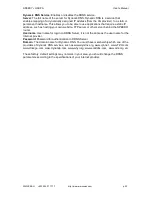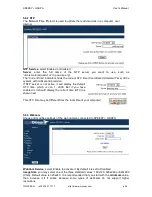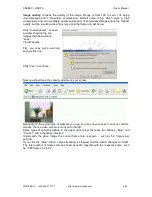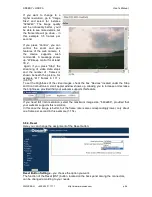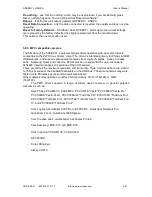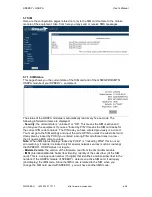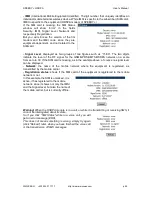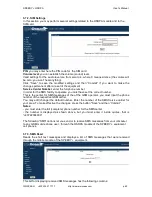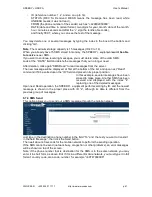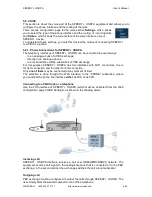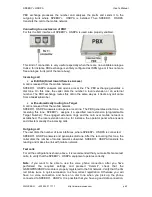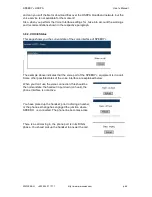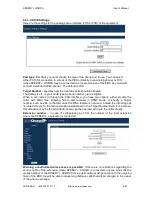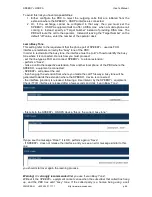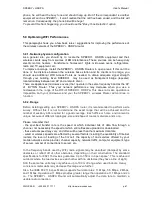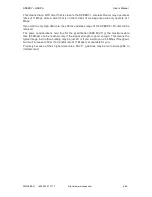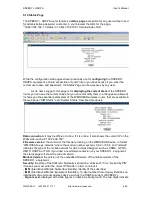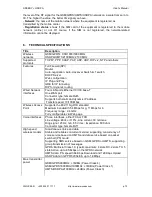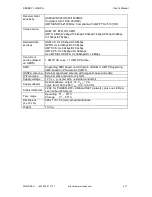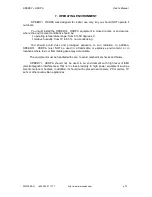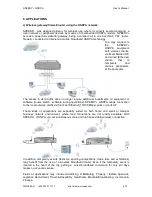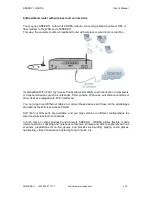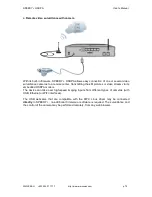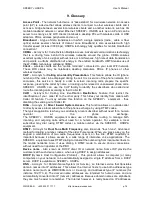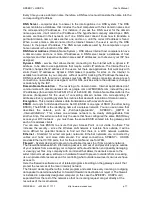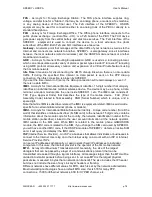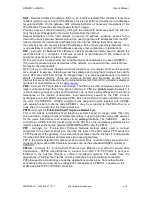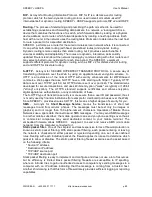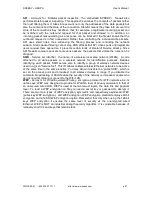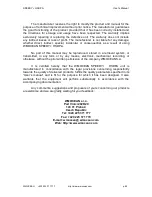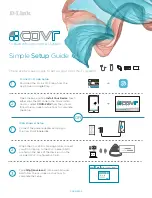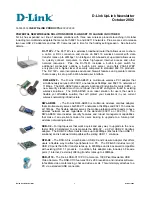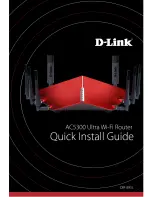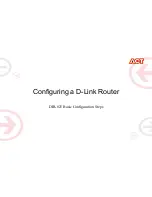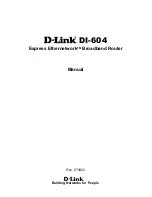
HSDPA
User’s Manual
WMOCEAN +420 225 371 777
http://www.wmocean.com
p. 67
phone, he will hear the busy tone and should hang up. But if the correspondent is another
equipment such as , it won’t realize that the call has been ended, and the link will
remain on. Consequently, the phone bill will be huge!
To prevent this from happening, you should use the “Busy Tone Detection” option.
5.9 Optimizing WiFi Performances
This paragraph shows you a few basic rules / suggestions for improving the performance of
the wireless network of the HSDPA router.
5.9.1. Network physical configuration
As a general rule, you should try to locate the HSDPA equipment and their
wireless clients away from sources of EMI disturbances. These sources can be heavy-duty
electric motors, heaters, transformers, fluorescent lights, microwave ovens, refrigerators,
radio and TV equipment, etc.
To improve coverage, install the HSDPA Routers in open areas. If this can’t be
done or the distance between the wireless base station and its clients is too large, you
should use additional WiFi Access Points as needed, to obtain adequate signal strength
through your building. Even may be used as transparent bridge (repeater)
located midway between an AP and a remote client.
There are appliances (microwave ovens) that operate in the same frequency band as the AP
of BYTON Router. Thus your network performance may decrease when you use a
microwave in
the range of the WiFi of HSDPA. This does not mean operation is
impossible, both your microwave and your the wireless Router will continue to
function.
5.9.2. Range
Before installing/setting up a HSDPA router, it is recommended to perform a site
survey. Without this it is not to determine the exact range that will be achieved and the
number of auxiliary APs required for a good coverage. Each office or home environment is
unique because of different topologies, size and shape of rooms, materials, and so on.
Please remember that:
- the specified transfer rate is the speed at which individual bits of data flow through a
channel, not necessarily the speed at which entire files are uploaded or downloaded
- these actual speed may vary, and often will be less than the maximum data rate
- wired or wireless speeds are affected by several factors including the availability of Internet
routers, the level of loading of the 3G cell, the capacity of and services offered by your
mobile network service provider, channel capacity, network traffic, computer equipment, type
of server, number of connections to server, etc.
In the frequency bands used by WiFi, radio signals may be absorbed (damped) by some
obstacles or reflect off of other obstacles, depending on their construction. The standard
specifications for 802.11b devices guarantee “up to 350 m in open space”. This is achieved
outdoors where the two devices see each other with no obstacles (they have a line of sight).
Still, the same two units may only achieve up to 100 m of range when used indoors. Heavy
concrete or metal walls may decrease this range even further.
Also, the IEEE 802.11b specification supports four data rates: 11 Mbps, 5.5 Mbps, 2 Mbps,
and 1 Mbps. Operation at 1 Mbps provides greater range than operation at 11 Mbps and so
on. The HSDPA Router will automatically adjust the data rate to maintain a
usable radio connection.

